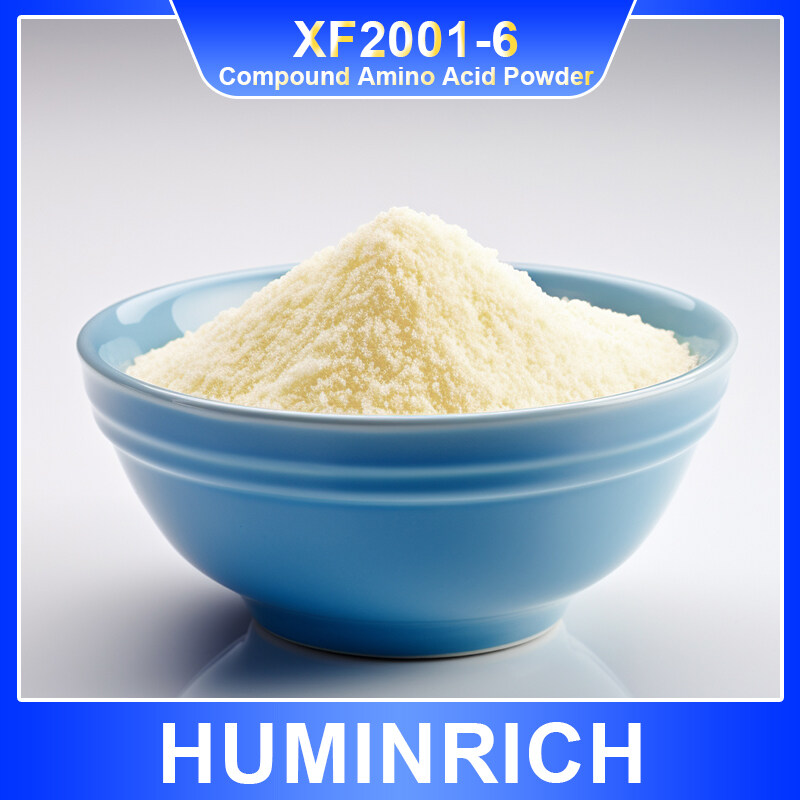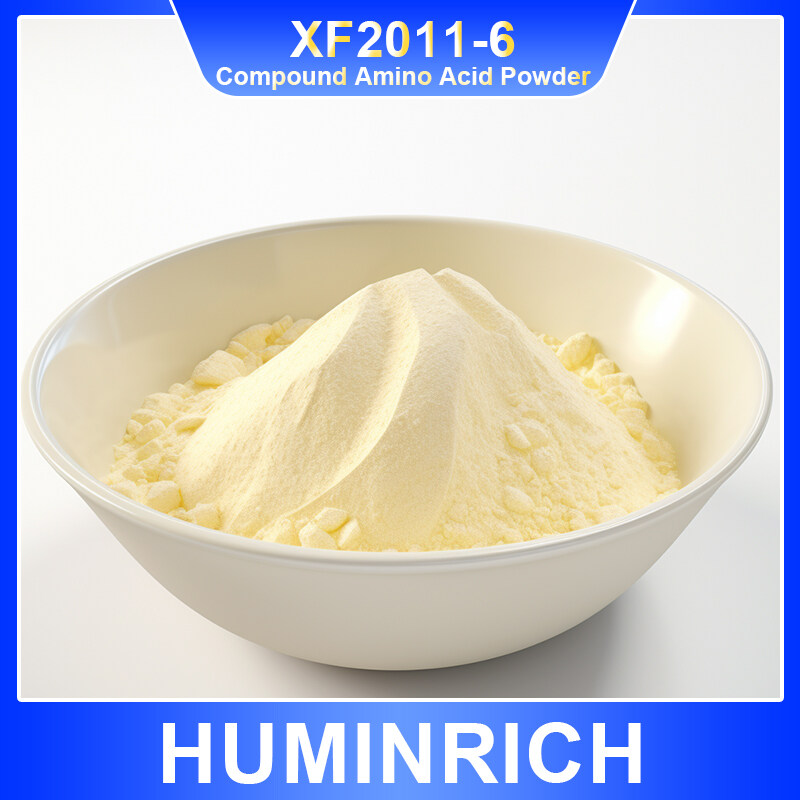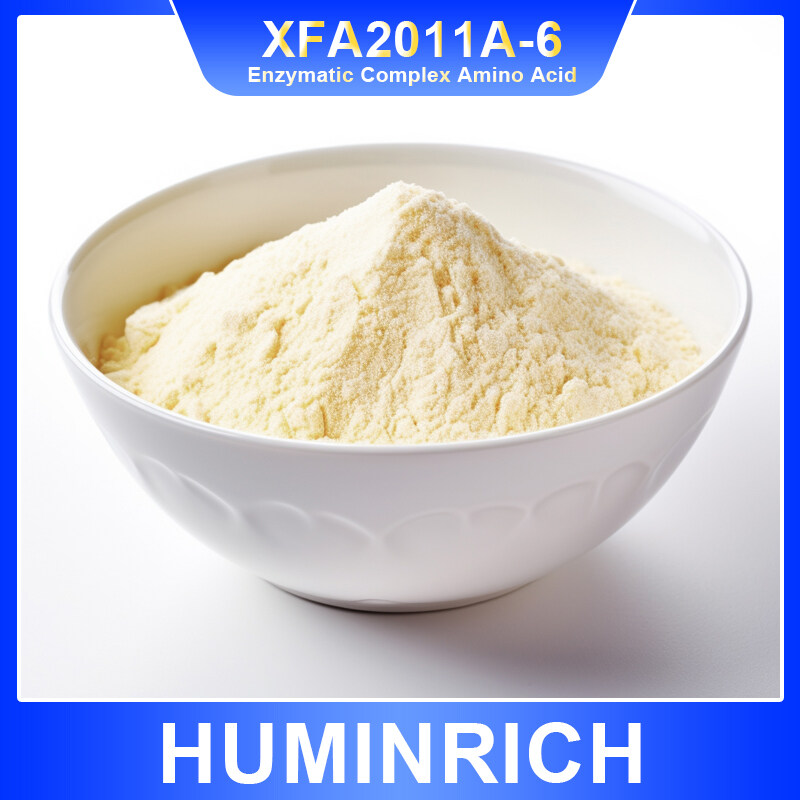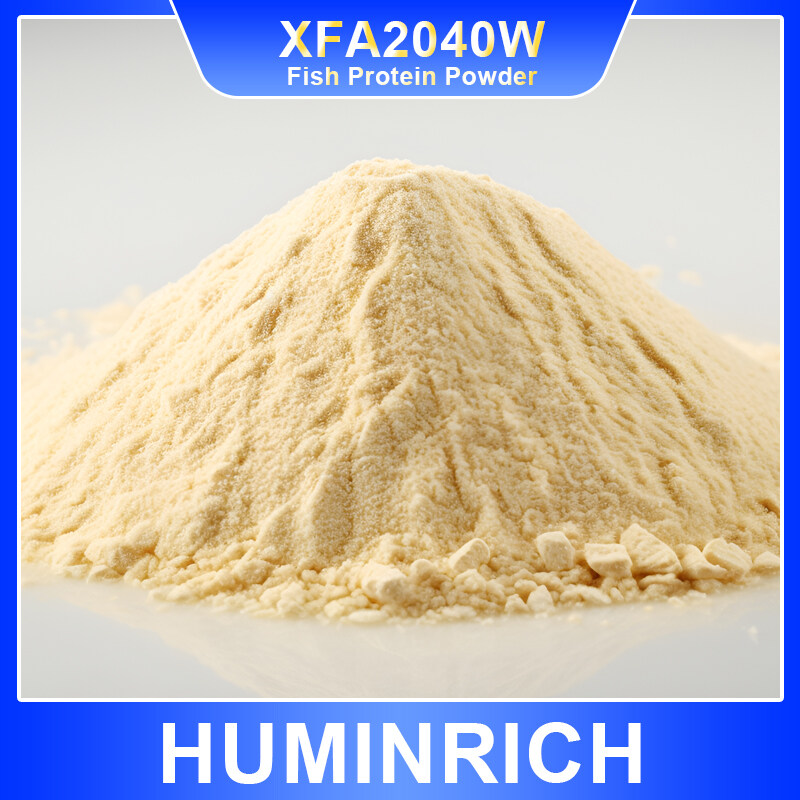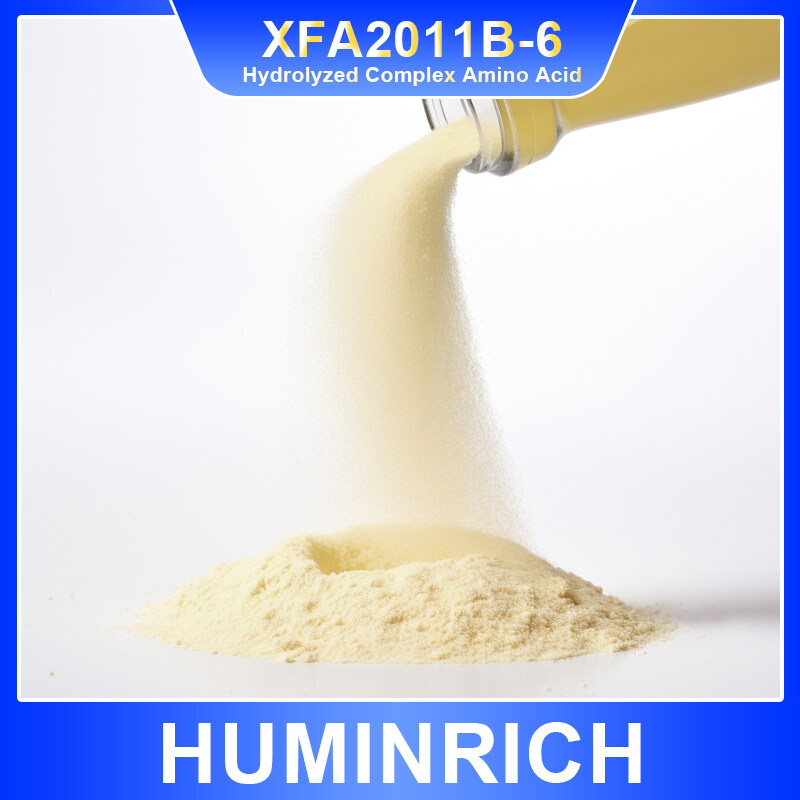Email format error
Email cannot be empty
Email already exists
6-20 characters(letters plus numbers only)
The password is inconsistent
Email format error
Email cannot be empty
Email does not exist
6-20 characters(letters plus numbers only)
The password is inconsistent

Plant and Animal Mixed Source Complex Amino Acid Powder
Composite amino acids from mixed plant and animal sources are products made from a variety of plant (such as soybeans, corn, wheat, etc.) and animal (such as fish, meat, animal bones, etc.) raw materials through extraction, separation, purification and other process steps. This product is rich in multiple amino acids, has comprehensive nutrition and high biological activity, and is an important nutrient required by both plants and animals.
|
Apperance |
Yellow or light yellow powder |
|
Source |
Animal & Plant |
|
Size |
60-80mesh |
|
Water Solublity |
97%-100% |
|
Total Amino Acid |
80%min |
|
Total Nitrogen |
12%min |
|
Chloride |
10% |
2. Product features:
Composite amino acids from mixed plant and animal sources are products made from a variety of plant (such as soybeans, corn, wheat, etc.) and animal (such as fish, meat, animal bones, etc.) raw materials through extraction, separation, purification and other process steps. This product is rich in multiple amino acids, has comprehensive nutrition and high biological activity, and is an important nutrient required by both plants and animals.
3. Product features:
3.1 Comprehensive nutrition: The product contains a variety of amino acids from plants and animals
3.2 High biological activity: The complex amino acids have high biological activity and are easily absorbed and utilized by organisms.
3.3 Significant effect: After application, it can activate enzyme metabolism, accelerate cell differentiation and division, promote crop metabolism, and improve yield and quality.
3.4 Green and pollution-free: The product is non-toxic, pollution-free, and pollution-free
4. Production process:
Raw material selection: Select plants (soybeans, corn, wheat, etc.) and animals (fish, meat, bones, etc.) as raw materials to ensure that the amino acid content in the raw materials is high enough and there are no residues such as pesticides and heavy metals.
Extraction: Plant raw materials are extracted by grinding, dissolving, filtering, etc., and animal raw materials are extracted by cutting, crushing, heating, etc.
Acid-base hydrolysis: The fermented materials are subjected to acid-base hydrolysis to further release amino acids and adjust the pH of the solution.
Separation: Amino acids are separated from the mixed solution obtained by extraction by centrifugation, filtration, evaporation, etc.
Purification: The separated amino acids are further purified by crystallization, rejection filtration, chromatography, etc. to obtain higher purity products.
5. Process characteristics:
Diverse raw materials: Using raw materials from mixed plant and animal sources, the product is nutritious.
Advanced technology: Using modern biotechnology, the extraction, separation, purification and other process steps are automated and continuous, which improves production efficiency and product quality.
Green and environmentally friendly: Environmental pollution is strictly controlled during the production process to achieve clean production.
6. Product application:
6.1 Chemical Industry
In the chemical industry, compound amino acids are mainly used as bio-based raw materials or intermediates to participate in a series of chemical reactions and synthesis processes. Its rich amino acid species and biological activity provide a broad space for the development of chemical products.
6.2 Feed Industry
In the feed industry, the application of compound amino acids is mainly reflected in the following aspects:
Nutritional supplementation: As an important protein component unit, compound amino acids can provide animals with essential nutrients, especially those limiting amino acids such as lysine and methionine. This helps to meet the animal's demand for protein and improve the nutritional value of feed.
Promote growth: Some amino acids in compound amino acids have a promoting effect on animal growth. For example, the addition of lysine and methionine can promote the growth rate and weight gain of livestock and poultry, and improve feed conversion rate.
Improve meat quality: The addition of compound amino acids can improve the meat quality of animals, making the meat more delicious and tender. This is mainly because amino acids can affect the formation and development of muscle fibers, thereby improving the taste and quality of meat.
6.3 In the field of agrochemicals, the application of compound amino acids is mainly reflected in the following aspects:
Soil improvement: Compound amino acids can improve soil structure, promote the formation of soil aggregates, and improve the soil's ability to retain water and fertilizer. This helps to create good conditions for the growth and development of plant roots.
Promoting plant growth: Some amino acids in compound amino acids have a promoting effect on plant growth. For example, glycine can promote the extension of plant leaves and the conduct of photosynthesis, thereby increasing the growth rate and yield of plants.
Improving stress resistance: Compound amino acids can improve plant stress resistance, such as drought resistance, cold resistance, and disease resistance. This helps plants maintain growth and yield in adverse environments and reduce the occurrence of diseases and pests.
Increasing the activity of soil microorganisms: Accelerate the reproduction of beneficial bacteria, release nutrients such as nitrogen, phosphorus, and potassium in the soil, and improve soil fertility.
It has significant effects in improving fruit products and appearance color:
First, it accelerates the destruction of chlorophyll, making the base color of the fruit lighter, which is conducive to the fruit showing a brighter color. Secondly, compound amino acids can promote the formation of anthocyanins, increase the soluble sugar content in the fruit, provide a rich skeleton for the synthesis of anthocyanins, and further promote the coloring of the fruit. These effects make the fruit more bright and uniform in color, improve the appearance quality, and thus enhance the market competitiveness of the fruit.
7. Shelf life: sealed and stored in a ventilated and dry place, and stored in the original packaging for 3 years
8. Packaging, transaction method, delivery method, etc.:
Packaging: 1kg/25kg bag/drum with linner inside.
Payment method: Western Union; T/T; MoneyGram
Shipping method: Sea/Air/Domestic Shipping}
9. After-sales service/customized service/sample service:
Packaging customization: Customized services are provided for packages above 20000KG;
Sample service: samples are available;

